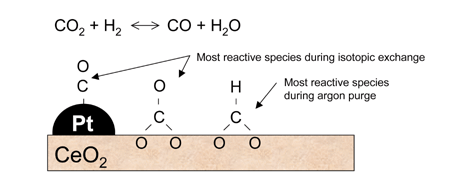On the importance of steady-state isotopic techniques for the investigation of the mechanism of the reverse water-gas-shift reaction†
Abstract
The formation and reactivity of surface intermediates in the reverse water-gas-shift reaction on a Pt/CeO2 catalyst are critically dependent on the reaction conditions so that conclusions regarding the reaction mechanism cannot be inferred using ex operando conditions.


 Please wait while we load your content...
Please wait while we load your content...